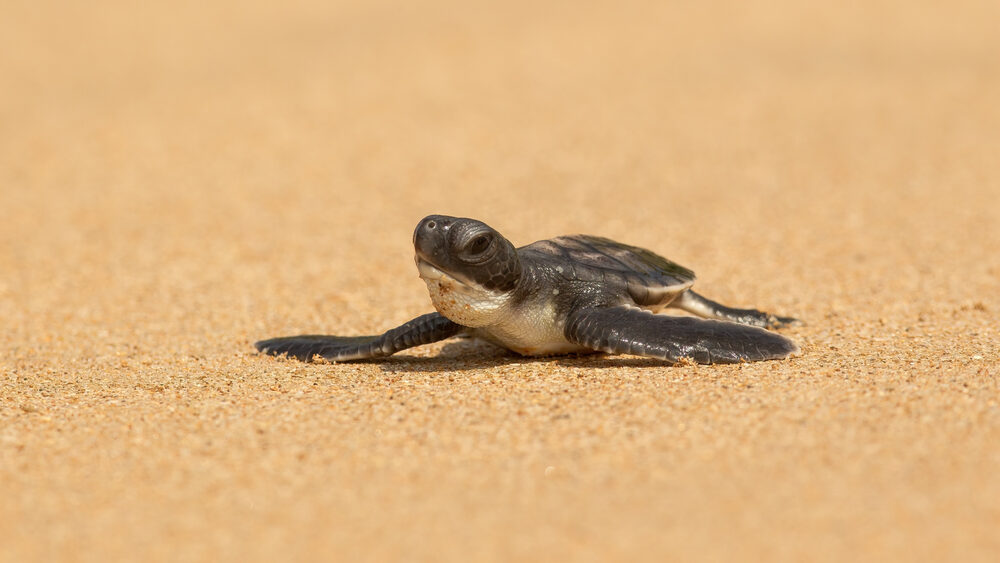Pollution and climate change are making it harder to be male . . . if you’re a sea turtle

The new findings, published in the scientific journal Frontiers in Marine Science, could mean the green sea turtle (Chelonia mydas) is at a higher risk of extinction than previously thought.
The research, supported by WWF-Australia funding, investigated the effects of pollution on the development of green sea turtles at Heron Island, QLD.
“We discovered that the presence of contaminants tended to be associated with producing females,” explained lead researcher Dr Arthur Barraza, a marine ecotoxicologist from Griffith University’s Australian Rivers Institute.
Turtles already at risk
Sand temperature usually determines a sea turtle’s sex.
More females hatch from eggs laid in warmer sand: cooler sand produces more males.
With temperatures increasing under climate change, parts of the species range – which is worldwide in tropical waters – are already experiencing higher than usual ratios of female hatchlings due to an increase in ambient sand temperature.
In the northern Great Barrier Reef, hundreds of females are born for every male, lead researcher Dr Barraza explained to Australian Geographic.
“As temperatures keep rising under climate change, there will be more and more females and fewer males,” he said. “With such high competition to find a male mate, sea turtles are at risk of decline if this problem isn’t addressed or studied further.”

Accumulating woes
Now green sea turtle populations face the added possibility that pollutants may also contribute to more eggs producing female hatchlings.
Contamination builds up in food chains, and Dr Barraza said pollutants accumulate in turtles over time as they eat contaminated plants and invertebrates.
“Specific pollutants, including heavy metals like cadmium and antimony, can then mimic oestrogen, the female sex hormone, or bind to receptors on the oestrogen molecules,” he said.
Dr Barraza said the contaminants send a false signal throughout the unhatched turtle’s body, which may shift it towards becoming female.
Sea turtles face a range of other threats, including poaching, collisions with boats, habitat destruction and accidental capture in fishing gear. All seven species of sea turtle are listed as endangered or critically endangered on the IUCN Red List of Threatened Species.
Solutions for turtles
Sea turtles collect contaminants from many places, not just at the beaches where they return to nest.
Dr Barraza explained that much of the heavy metal pollution in the ocean comes from human activity, including industry, mining, agricultural runoff and general urban waste.
“The best way to support turtles is to develop more comprehensive policies. We need to ensure that we reduce pollution in the ocean,” he said.
Dr Barraza said the subtle effects of contaminants on the environment can be more profound than we realise, and it was critical to understand these further.
“This study has shown that contaminants may affect the sex of green sea turtles and now we need to explore this in more detail.”





